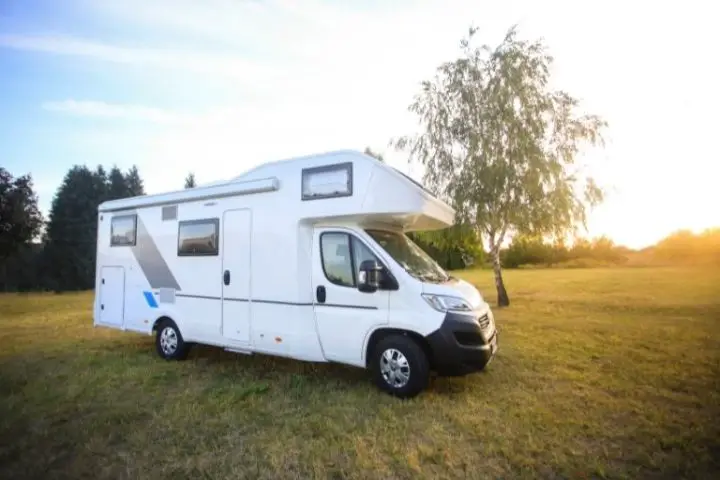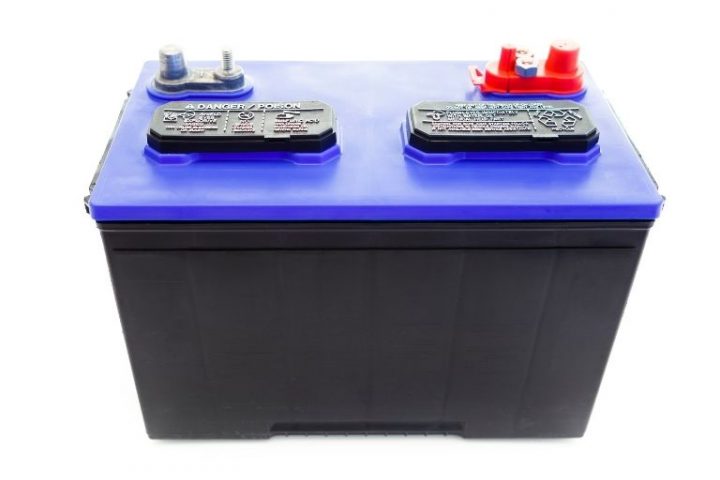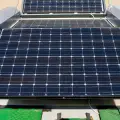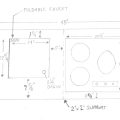Hey! This site is reader-supported and we earn commissions if you purchase products from retailers after clicking on a link from our site.
Have you ever stored your RV for a period of time only to return to it and find that your camper battery was dead? This is not an uncommon problem for RVers as many appliances and gadgets in your RV are “vampires” or parasitic. What does that mean? It means that regardless of whether or not you’re boondocking or just storing your RV, there’s usually a power drain on your batteries. Simple little things such as a clock on your microwave oven or conventional stove can be gradually reducing the power supply in your battery bank. Many appliances in your motorhome or camper never completely shut off even when you turn them off. Instead, they go into a standby mode. This is quite common for onboard stereo and entertainment systems. Even a cell phone or laptop battery charger will continue to draw power regardless of it’s charging you device or not. Simply put, it’s draining your battery of precious power that you may need to comfortably stay in your RV while you’re off-grid.
Also, draining your lead acid-based batteries below 50% can severely reduce the life expectancy of those batteries. Additionally, over-charging can be equally detrimental as well, so it’s important that you keep these two factors well balanced if you want to get the most use out of your batteries.
Table of Contents
- What can I do to prevent a parasitic draw on my battery when I’m not using my RV?
- Finding a good location to place your battery’s shut off switch
- How do I position the switch for on/off?
- Final Thoughts
What can I do to prevent a parasitic draw on my battery when I’m not using my RV?

One thing I recommend doing is to install a battery disconnect switch. These switches are usually under ten dollars and can be easily installed in less than an hour of time with extraordinarily little effort on your part.
In this article, we’ll look at installing this type of switch that will eliminate unnecessary power drainage from your RV’s battery. We’ll also examine what location you’ll want to place the switch as well the necessary tools you should have on hand to tackle this simple project that should add years to your battery’s life.
Finding a good location to place your battery’s shut off switch

This can be a difficult decision, but I recommend locating your switch on the lid of your battery box and more specifically on the areas that are angled toward its top. This will help to prevent any moisture from rain or wet roadways while you’re traveling from dripping down your keyhole and potentially shorting out your switch.
To begin, determine the size of the holes you’ll need to drill in your battery box lid and use the appropriate drill bit to make your openings for the switch. As a rule, you should never locate your switch using the positive load line as this can cause damage to your switch. Instead, position your switch to interrupt the negative line and wire it according to the manufacturer’s specifications.
Since a 12-volt electrical load is based on a direct current feed, the electrical current cannot be returned to the power source, so a switch installed in the negative line of the battery or battery bank is more effective and less likely to cause damage to your RV. However, if you’re looking to install an electrical shut-off switch in an alternate (AC) power supply system such as those found in RVs while connected to a shore power source of electric or connected to their own power source such as solar or wind and powering an AC system of 110/120-volts, then you’ll have to reconfigure your switch and install the switch on the positive load line because AC systems return the load through alternating current meaning it is returned through the same line that it was delivered.
How do I position the switch for on/off?
As a rule, whenever you are designing a system with a load, be it electrical or water based such as a fresh water supply or gray and black water lines, you always want to position the switch so that the flow position is in line with the line. In other words, picture your line being lined up horizontally from east to west. The switch should be installed to follow that flow. If you install your shut-off valve in a north-south configuration when your load is traveling from east to west, then it’s likely to be confusing over time.
An electrical system shut-off valve is always a good idea, especially if your RV is set up for AC power and DC current. In fact, it’s a good idea to put those safeguard in whatever system you rely upon.
Final Thoughts
Once again, my friends, thank you so much for following my column. Cheers…and I hope to do some grilling on the road with you soon.






